Gima 49880 Handleiding
Gima
Bloeddrukmeter
49880
Bekijk gratis de handleiding van Gima 49880 (2 pagina’s), behorend tot de categorie Bloeddrukmeter. Deze gids werd als nuttig beoordeeld door 31 mensen en kreeg gemiddeld 4.7 sterren uit 16 reviews. Heb je een vraag over Gima 49880 of wil je andere gebruikers van dit product iets vragen? Stel een vraag
Pagina 1/2

CMS2.782.253(LED )(CE)ESS/1.6 1.4.01.06.466 2023.11
Foreword
Please read the User Manual carefully before using this product. The User Manual which describes the operating procedures
should be followed strictly. This manual detailed introduce the steps must be noted when using the product, operation which
may result in abnormal, the risk may cause personal injury and product damage and other contents, refer to the chapters for
details. Any anomalies or and device damage arising from use, maintain, store do not personal injury follow requirements of the
User Manua responsible for the safety, reliability l, Our company is not and performance guarantees! The manufacturer’s warranty
service does not cover such faults!
Our company has a factory record and user profile for each device, users enjoy free maintenance services for one year from the
date of purchase. In order to facilitate us to provide you with a comprehensive and efficient maintenance service, please be sure
to return the warranty card when you need repair service.
Note: Please read the User Manual carefully before using this product.
Described in this User Manual is in accordance with practical situation of the product. In case of modifications and software
upgrades, the information contained in this document is subject to change without notice.
The warning items
Before using this product, you should consider the safety and efficacy of the following described:
Described each measurement results combined with clinical symptoms by qualified doctors.
The reliability and operation of using this product whether meets the operation of this manual relate to the maintenance
instructions.
The intended operator of this product may be the patient.
Do not perform maintenance and service while the device is in use.
Warning: Replace accessories which not provided by our c R ompany may lead to the occurrence of errors. eplace adapters,
cuffs at will may result in wrong measurement results. Without our company or other approved maintenance organizations
trained service personnel should not try to maintain the product.
R esponsibility of operator
The operator must carefully read the User Manual before use this product, and strictly follow the o p perating rocedure of the
User Manual.
Fully consider the security requirements product design, but the operator should not ignore the observation for the during
patient and the state machineof .
The operator ha the responsibility to provide the use condition of the product to ous r company.
Any serious incident that has occurred in relation to the device should be reported to the manufacturer and the competent
authority of the Member State in which the user and/or patient is established.
R f esponsibility or our company
Our company h the responsibility to provideave qualified roductp which conform to company standard of this product
Our company will provide the circuit diagram, calibration method and other information at the request of the user to help
the appropriate and qualified technicians to repair those parts designated by our company.
Our company have the responsibility to complete product maintenance according to the contract.
Our company have the responsibility the requirements of user in time. to respond
In the following case, our company is responsible for the impact on the safety, reliability and performance of the device:
Assembly, addition, debugging, modification or repair are carried out by personnel approved by our company.
The electrical facilities in the room are in compliance with the relevant requirements and the device is used in accordance with
the User Manual.
The User Manual is written by our company. All rights reserved.
Chapter1 Functions and Purpose
1.1 Main Functions
Measure blood pressure and store the measurement results.
Data storage function, up to 199 records can be stored.
With data review interface which is convenient for reviewing blood pressure parameter.
The screen will prompt message when the power is low.
When the measurement result can not be obtained due to some factors during the measurement, the device will display the
corresponding error information.
Measurement units: mmHg and kPa, which can be switched by the button.
With automatic shutdown function, if there is no operation, the device will automatically turn off.
Voice broadcast(optional for devices with voice function)
1.2 Intended Purpose
In Europe,The Electronic Sphygmomanometer can be used to measure NIBP of human body. The measured NIBP parameters can
be recorded to provide reference for family members and relevant medical staff. It is applicable to adult and adolescent. It can be
used in home and health institutions.In other areas,The Electronic Sphygmomanometer is intended to measure the systolic,
diastolic and mean blood pressure as well as pulse rate via non-invasive oscillometric technique in which an inflatable cuff is
wrapped around the upper arm. It can be used on adult individuals.
Chapter2 Safety Precautions:
In order to use it correctly, please read the "Safety Precautions" carefully before using it.
Operators do not need professional training, but should use this product after fully understanding the requirements in this manual.
To prevent users from suffering due to improper use, please refer to "Safety Precautions" and use this product damage or loss
properly.
For safety reasons, be sure to comply with safety precautions.
Note
If not use correctly, it exists the possibility of damage for personnel and goods.
Good damage means the damage of house, property, domestic animal and pe t.
Contraindication
Not found.
Warning
You must not perform NIBP measurements on patients with sickle cell disease or under any condition which the skin is -
damaged or expected to be damaged.
For patients with severe disturbances of blood coagulation, whether automatically measure the blood pressure should be
based on the clinical evaluation, because limb friction with the cuff may cause the risk of hematoma.
For severe blood circulation disorder or arrhythmia patients, please use the device under the guidance of a doctor. If the arm is
squeezed during measurement, it may cause acute internal hemorrhage or inaccurate measurement results.
Measurement Limitations
To different patient conditions, the oscillometric measurement has certain limitations. The measurement is in search of regular arterial
pressure pulse. In those circumstances when the patient's condition makes it difficult to detect, the measurement becomes unreliable and
measuring time increases. The user should be aware that the following conditions could interfere with the measurement, making the
measurement unreliable or longer to derive. In some cases, the patient's condition will make a measurement impossible.
Patient Movement
Measurements will be unreliable or can not perform if the patient is moving, shivering or having convulsions. These motions may interfere
with the detection of the arterial pressure pulses. In addition, the measurement time will be prolonged.
Cardiac Arrhythmia's
Measurements will be unreliable and may not be possible if the patient's cardiac arrhythmia has caused an irregular heartbeat. The
measuring time thus will be prolonged.
Heart-lung Machine
Measurements will not be possible if the patient is connected to a heart-lung machine.
Pressure Changes
Measurements will be unreliable and may not be possible if the patient's blood pressure is changing rapidly over the period of time
during which the arterial pressure pulses are being analyzed to obtain the measurement.
Severe Shock
If the patient is in severe shock or hypothermia, measurements will be unreliable since reduced blood flow to the peripheries will
cause reduced pulsation of the arteries.
Heart Rate Extremes
Measurements can not be made at a heart rate of less than 40 bpm and greater than 240 bpm.
Round Patient
The thick fat layer of body will reduce the measurement accuracy, because the fat that come from the shock of arteries can not
access the cuffs due to the damping
Warning
Self-diagnosis and treatment using measured results may be dangerous. Follow the instructions of your physician.
Please hand measurement results to the doctor who knows your health accept diagnosisand .
For Infant and the person who can't express oneself, please use the device under the guidance of a doctor.
Otherwise it may cause accident or dissension.
Please do not use for any other purpose except BP measurement.
Otherwise it may cause accident or holdback
Please use special cuff.
Otherwise it is possible that measurement result is incorrect.
Please do not keep the cuff in the over inflated state for a long time.-
Otherwise it may cause risk.
Please do not use air tube or power cable entangles patient’s neck.
Otherwise it may cause strangulation.
Do not use the device in the case of there are flammable anesthetic gasses mixing with the air or nitrous oxide.
Otherwise it may cause risk.
If liquid splashes on the device or accessories, especially when liquids may enter the pipe or device, stop using and contact the
service department.
Otherwise it may cause risk.
Dispose of the packaging material, observing the applicable waste control regulations and keeping it out of children' s reach.
Otherwise it may cause harm to the environment or children.
Please use approved accessories for the device and check that the device and accessories are working properly and safely before use.
Otherwise the measurement result may be inaccurate or an accident may occur.
When the device is accidentally damp, it should be placed in a dry and ventilated place for a period of time to dissipate moisture.
Otherwise the device may be damaged due to moisture.
Do not store and transport the device outside the specified environment.
Otherwise it may cause measurement error.
It is recommended that you check if there is any damage on the device or the accessories regularly, if you find any damage, stop
using it, and contact the biomedical engineer of the hospital or our Customer Service immediately. Do not disassemble, repair
and modify the device without permission.
Otherwise it cannot be accurately measured.
This device can not be used on mobile transport platforms.
Otherwise it may cause measurement error.
This device can not be used on a tilted tabletop.
Otherwise there is a risk of falling.
Dispose of packaging materials, waste batteries and end- -of life products in accordance with local laws and regulations. The
end- -of life products and materials are properly disposed of by the user in accordance with the authority’s decree.
Replace accessories which not provided by ompany may lead to the occurrence of errors.our c
Without our company or other approved maintenance organizations trained service personnel should not try to maintain the
product.
This device can only be used for one test object at a time.
If the small parts on the device are inhaled or swallowed, please consult a doctor promptly.
The device and accessories are processed with allergenic materials. If you are allergic to it , stop using this product.
After pressing the power button, if the device has display fault such as white screen, blurred screen or no display content, please
contact our company.
The device shall comply with the standard IEC 80601-2-30:Particular requirements for basic safety and essential performance of
automated non- invasive sphygmomanometers.
Do not use the device in a high frequency electromagnetic environment,otherwise it may cause an abnormal error or shutdown. -
keep away from this environment,the device may return to normal.
The highest temperature of the enclosure may go up to 45 ℃, the contact time is less than 1 minute.
It is necessary to clean the device between uses on different patients.
2.1 Operation for power a dapter(Separate Sale)
Note
The device can be powered by a power adapter that is a part of the medical electrical system.Be sure to use the dedicated
medical grade power adapter of this device.
Otherwise it may cause trouble
Dedicated power adapter must use AC 100 V~240 V
Otherwise it may cause fire or electric shock.
When there is breakage of dedicated power adapter plug or wire, please do not use it.
Otherwise it may cause fire or electric shock.
Please do not plug or unplug the adapter the socket on with wet hands.
Otherwise it may cause electric shock or injury.
When using the power adapter to connect with the power socket, make sure the power socket is conveniently accessible, in order
to timely disconnect from the power when emergency.
2.2 Operation for Battery
Note
Please use 4 "AA" size manganese or alkaline batteries, do not use batteries of other types.
Otherwise it may cause fire.
Do not mix old and new batteries and batteries of different types
Otherwise it may cause battery leakage, heat, rupture, and damage to Electronic Sphygmomanometer.
Please don't put wrong the positive and negative of battery. When the batteries power exhausts, replace with four new batteries
at the same time.
Please take out the batteries when you do not use the device for a long time(3 months or more).
Otherwise it may cause battery leakage, heat, rupture, and damage to Electronic Sphygmomanometer.
If electrolyte of the batteries immodestly get in your eyes, immediately rinse with plenty of clean water.
It will cause blindness or other hazards, should immediately go to the nearest hospital for treatment.
If electrolyte of the batteries immodestly glues on the skin or the clothes, immediately rinse with plenty of clean water.
Otherwise it may hurt the skin.
Advice
Do not strike or drop the device;
Do not inflate before the cuff wraps around the arm;
Do not inflect the cuff and the air tube forcibly.
Chapter3 Main Unit
All s product are in the . Open the box box and confirm whether the product is whole.
3.1 Display
:Irregular pulse icon.Irregular pulse icon is displayed in the measurement results if the pulse internal is irregular during
measuring,
:Movement icon.The “Movement” icon appears if patient moves and continue measuring may lead to inaccurate measurement.
:Cuff tied icon.The icon appears if Cuff tied properly.The icon disappears if not
:Memory Function icon.
/ :Voice icon.The voice function is enabled or not(optional for devices with Voice function)
3.2Accessories
Cuff User Manual AC Adapter
Cuff:
Specification: - limb circumference 22 32 cm (middle part of upper arm ), please choice suited cuff when measuring other.
Separate Sale:
AC Adapter
Input: frequencyvoltage: AC 100 V~240 V : 50 Hz/60 Hz Rated current: AC 150 mA
Output:DC5.0 V±0.2 A V 1.0
Note:
◎ The cuff is a consumable. Calculate by measuring 6 times a day(3 times each morning and evening), the service life of the cuff is
about 1 year.(using our experimental conditions);
◎ In order to correctly measure blood pressure, please replace the cuff in time;
◎ If the cuff leaks, please contact our company to buy a new one. The cuff purchased separately does not include the airway tube
plug. When replacing, please do not throw the airway tube plug away, install it on the new cuff.
N ote
It is recommended that the device should be inspected and calibrated (refer to Chapter 11 for details) once a year, as the aging of internal
components (such as sensor) will degrade performance or cause other problems. When the product and accessories described in this
manual are about to exceed the period of use, they must be disposed according to relevant product handling specification. If you want to
know more information, please contact our company or representative organization.
Chapter4 External Interfaces
Note
When removing NIBP cuff, please take plug at the front of the windpipe to pull out.
① Cuff socket ②Power adapter socket
①
is cuff identifier
② and represents different power adapter sockets, only one of them will appear on your product.
Note
All analog and digital equipment connected to this device must be certified to IEC standards(such as IEC60950: Information technology
equipment-Safety and IEC60601-1: Medical electrical equipment-Safety), and all equipment should be connected to in accordance with
the requirement of the valid version of the IEC60601-1 system standard. The person connecting the additional equipment to the signal
input and output port is responsible for whether the system complies with the IEC60601-1 standard.
Chapter5 Battery/AC Adapter Installation
The production can use battery and AC adapter.
5.1 Battery Installation
① ②
① Open the battery compartment cover.
② Install "AA" batteries according to
. polarities
③ Close the battery compartment cover.
Icon “
”: the batteries power will exhaust. Replace with four new batteries (the same sort) at the same time. Test while low
power may cause data deviation and other problems.
Turn the unit off before replacing the batteries.
Note
When the battery reaches the end of its life, or if the battery is found to have odor, deformation, discoloration or distortion,
stop using the battery and dispose of the used battery in accordance with local regulations, otherwise it will cause
environmental pollution.
5.2 Usage of power adapter
1.Connect the sphygmomanometer a . and the power dapter Plug the power adapter plug into the power adapter socket on the
back of the device
2.Please insert the power plug of the dapter a into the AC 100 V~240 V socket.
Note
The device can be disconnected from the power supply network by unplugging the adapter plug.
When cut off the power supply, first cut off the connection of power socket and the regulated power supply, then cut off the
connection of regulated power supply and the sphygmomanometer.
Please be sure to use dedicated medical grade power adapter.
Note
When regulated power supply and batteries are both used at the same time, the battery power will not be consumed.
Switch regulated power supply and battery as power supply when the device is off, otherwise, the device may shutdown due
to power failure.
The device can be used normally after it is turned on ,without waiting for the device to be prepared.
Chapter6 Button Functions
6.1 Description for button operation
All the operations to the Electronic Sphygmomanometer are through buttons. The names of the buttons are above them. They
are:
Left button is “M” button, under “OFF” state, press this button to enter the review interface (refer to
Chapter 8 for details.).
Right button is “START/STOP” button, under “OFF” state, press this button to enter measurement mode,
inflate the cuff to measure blood pressure, press this button again to turn off the device.
6.2 Units setting
Under “OFF” state, press “M” button and “START/STOP” button simultaneously for 5 s to enter the setting interface, the default
unit in this interface is “mmHg”; short press “M” button to switch the unit between “mmHg” and “kPa”.
6.3 Volume setting (optional for devices with voice function)
Press “START/STOP” button again in the unit setting interface to enter the volume setting interface. Press “M” button to
change the volume, the maximum volume is 4, and the minimum is 0 (silence).
After completing the setting, repeatedly press the “ ” button to turn the device off.START/STOP
Note
The default unit of the device when leaving factory is mmHg.
Chapter7 The Usage Method of Sphygmomanometer
7.1 Accurate Measurement Way
Measurement in quiet and relaxing state.
1. Adopt a comfortable sitting position, use back and arms to support the body.
2. Place your on a tableelbow , the palm faces up and the body is relaxed.
3. The cuff is level with your heart.
4. Feet flat on the floor, and do not cross your legs.
Advice
Try to measure your blood pressure at the same time each day with the same arm and the same pose for consistency.
The high and low location of cuff will cause changes in measure results.
Do not touch the sphygmomanometer, cuff and windpipe during measure.
Measurements should be taken in a quiet place and the body relax.
Remain still 4~5 minutes before measurement.
Do not talk and movement during the measurement. Relax the body, do not let the muscle activity.
Wait 4~5 minutes between measurements.
Do not use precision instrument near the Sphygmomanometer.
Warning
When repeated the accurate blood pressure value may not be measured due to congestion in the armly measuring, . Please
measure after the blood flow is smooth.
Repeated measurement for a long period of time, limbs rubbing with the cuff may be accompanied by purpura, ischemia and
nerve damage. When measurement a patient, it is necessary to frequently check the color, warmth and sensitivity of the distal of
the limb. Once any abnormalities are observed, place the cuff in another position or stop the blood pressure measurement
immediately.
Please use the device at an environment of suitable temperature, humidity and altitude otherwise it will cause measurement
error.
Do not twist or wrap the airway tube. It can cause constant pressure in the cuff which can block blood flow and cause serious
damage to the patient.
Do not use the cuff on the injured area, which will cause more serious damage to the area.
Do not use the cuff in the area where the treatment is being performed inside blood vessel or the arteriovenous connection. This
may cause temporary blockage of blood flow and cause injury to the patient.
Do not use the cuff on the side of the mastectomy.
When using the cuff to pressurize, some of the body’s functions may temporarily weaken. Do not use the measurement medical
electrical equipment at the appropriate arm position.
Do not move during measurement, it will have a delayed effect on the patient’s blood flow.
The device need to be placed for 2 hours from the minimum storage temperature to being ready for its intended use.
The device need to be placed for 4 hours from the highest storage temperature to being ready for its intended use.
Note
The following conditions may also cause changes in the blood pressure measurement value.
Take the measurement in one hour after meal or after drinking alcohol, coffee or after smoking, exercise, bathing ;
Using incorrect posture such as standing or lying down, etc;
The patient speak or move his body during measurement;
When measuring, the patient is nervous, excited, emotional instability;
The room temperature rise or fall sharply, or the environment of measurement often changes;
Measuring in a moving vehicle;
The high and low location of cuff will cause changes in measurement results;
Continuous measurement for a long time.
7.2 Applying the Cuff
Both left and . right arm can be measured
Bare your arm or cloth close-fitting clothing during measurement.
Carry out the operation in a room with comfortable temperature.
When measuring, take the thick clothes off instead of rolling up the sleeves.
In order to measure accurately, pay attention to applying the cuff properly (left arm).
① Insert the arm cuff air plug in the cuff s socket of phygmomanometer.
② Stretch cuff into a barrel for the arm can conformable enter into the barrel
③ Left arm penetrate through the cuff, the air tube of the cuff will pass the top of your palm.
④ Wrap the cuff to your upper arm. Make the air tube inside the forearm and aligned with your middle finger.
⑤ The bottom of the cuff should be approximately 2cm~3cm above your elbow.

⑥ Be fixed with cloths, and wrapped tight cuff, the arm and the cuff should not have gaps.
① ② ③
④ ⑤ ⑥
7.3 Measurement BP
① Under “OFF” state, press “START/STOP” button to start measuring.
During measurement, please keep correct pose and quiet state, the body could not move.The “Movement” icon appears if
patient moves, and continue measuring may lead to inaccurate measurement.
If you want to abort the measurement
Press【START/STOP】button, the device will stop inflating, the air from the cuffand release .
② Read the measurement result after the measurement is completed.
The measurement data will be displayed on the interface after the measurement is completed. If the measurement result is
normal, the pressure bar at the right side is green. If the measurement result shows hypertension, red pressure bar will appear.
The length of the pressure bar represents the difference between systolic blood pressure and diastolic blood pressure, the longer
the pressure bar is, the larger the difference.
7.4 Confirm the Measurement Value
The World Health Organization has established globally accepted standards for the assessment of hypertension readings.(In the
clinic environment)
Blood pressure level
Systolic pressure
Diastolic pressure
Normal
Pressure
<
130mmHg
Pressure
<
85mmHg
Normal Systolic Value
130mmHg≤Pressure≤139mmHg
85mmHg≤Pressure≤89mmHg
Mild Hypertension
140mmHg≤Pressure≤159mmHg
90mmHg≤Pressure≤99mmHg
Moderate Hypertension
160mmHg≤Pressure≤179mmHg
100mmHg≤Pressure≤109mmHg
Severe Hypertension/High Blood Pressure
180mmHg≤Pressure
110mmHg≤Pressure
* -Self diagnosis and treatment using measured results may be dangerous. Follow the instructions of your physician.
N ote
Wait at least 4- .5 minutes between measurements
When repeated the accurate blood pressure value may not be measured due to congestion in the armly measuring, . Please
measure after the blood flow is smooth.
When the screen displays Err, the measure can't be carried out correctly.
Irregular pulse icon is displayed in the measurement results if the pulse internal is irregular during measuring, which may
cause it is unable to take measurement correctly. Please keep quiet and remeasure. If the irregular pulse icon appears
frequently, please consult a doctor.
The minimum value of the patient’s physiological signal is the minimum limit that the device can measure. The device may
obtain inaccurate measurement results when it is operated below the minimum amplitude or minimum value of the
patient’s physiological signal.
*The device will automatically turn off after five minutes in which there is no operation to the device, even if you forget to turn
the power off.
Chapter8 Memory Function
The device can store NIBP values automatically, display up to 199 set of measurement results.
If 199 set of measurement data have been stored in current device, when saving the 200th set of data, the earliest set of data will
be overwritten. If no measurement values, the memory values can be not numerated.
Memory function can not be used during measuring.
When there is no measurement values, “---” will display on the review interface.
8.1 Review the Memory Value
1.Under “OFF” state, press “M” button to display the average value of the latest three set of data, when the number of
measurement data is less than three groups, it will supplement automatically. Continue to press “ ” button in current interface M
to view all measurement records.
2.After the measurement is completed, press “M” button in the measurement result interface to display the average value of the latest
three groups of data. continue to press “M” button in the current interface to view all measurement records.
8.2 Delete Memory Values
1.Users can delete all memory values of the current user instead of separately delete one memory value
2.Under the memory interface, press “ ” button and “START/STOP” button simultaneously for more than 5 s, after “DEL” appears M
on the screen, all memory values will be deleted.
Caution
When querying the measurement records, please press “M” button continuously to query one by one.
Chapter9 Key and Symbols
Your device may not contain all the following symbols.
Signal
Description
Signal
Description
Caution: read instructions (warnings) carefully
Follow instructions for use
SYS
Systolic pressure
DIA
Diastolic pressure
MAP
Mean blood pressure
PUL
Pulse rate (bpm)
IP20
Covering Protection rate
EMC
Electromagnetic compatibility
Recyclable
P/N
Material code of manufacturer
Lot number
Use by date
This way up
Fragile, handle with care
Keep in a cool, dry place
Atmospheric pressure limit
Temperature limit
Humidity limit
Manufacturer
Date of manufacture
Batteries Power
Serial number
Flating
Deflating
WEEE disposal
Medical Device compliant with Directive
93/42/EEC
Class II applied
Type BF applied parts
Authorized representative in the European
community
Irregular pulse
Socket for power adapter
Interface for connecting cuff
Voice closed
Voice enabled
Large movement during measurement
Cuff tied properly
Artery indicator label
Medical device
MR Unsafe, can not be used in MRI
Imported by
Product code
Chapter10 Error Message
When the high pressure position appears "Err" and the low pressure position appears the error number, the measurement is not
normal.
Error Mark Causes Solutions
Err2
Err15
Function abnormal Please contact us
Err4
① Incorrect battery installation
② Low battery or wrong battery type
① Correctly re- install the battery
② Replace new battery with correct type (see
Chapter 5)
Err6
Err7
Err14
① Disconnection of cuff or cuff connection is loose,
causing air leakage
② Cuff is wrapped loosely or is not wrapped, resulting in
unable to reach the preset inflation value
③ Air leakage of cuff or internal device
① Correctly connect the cuff with the device
(see Chapter 7)
② Correctly wear the cuff (see Chapter 7)
③ Please contact us
Err9
① Cuff is wrapped loosely or is not wrapped, resulting in
sampled pulse signal is weak
② The pulse signal of the patient is weak
① Correctly wear the cuff (see Chapter 7)
② Measure again
Err12
① External pressure to the cuff during measurement
leads to overpressure
② The airway or plug of the cuff is blocked, causing
overpressure
① Do not squeeze the cuff or move your arm
and body during measurement, and measure
again
② Check the plug of the cuff and correctly
connect the cuff with the device (see Chapter
7), and measure again
Err8
Err11
Err13
The signal changing is incorrect owing to the arm or body
moving or other reasons when measuring
Keep the arm, body still, and measure again
Err10
The measurement result exceeds the limits owing to the
arm or body moving or other reasons when measuring
Err16
Measurement timeout caused by arm or body movement
or other reasons during measuring
Chapter11 roubleshootingT
Abnormal Phenomenons
Causes
Solutions
BP measurement values
too high or too low.
Cuff is not connected correctly. Correctly connect cuff.
Talk or move arm in measurement Keep quiet and restart a measurement.
The turnup close oppress the arm
Take off the clothes, and restart a measurement
No pressure
Cuff leakage
Buy a new cuff.
The cuff windpipe is not correctly connected
with cuff
Correctly connect.
Cuff not inflate
Contact us.
Cuff deflate in short time
Loose cuff
Correctly tangle cuff.
It can not carry on measurement ,even if press the measurement button
Return on the power and restart a measurement.
Abruptly turn the power
off in adding pressure
No use for a long time, the batteries can be
exhausted owing to the changed temperature
Replace all four batteries with new ones.
Hold the on/off button
but can not start the
device
Batteries are worn
Replace all four batteries with new ones.
The battery polarities is reversed
Check the battery installation for proper placement
of the battery polarities.
Cuff inflation start before press the measurement button
Stop using the device and contact us.
Cuff never deflation
Stop using the device and contact us.
Air pressure error
Deflation error
Pull out the cuff to deflate. Stop using the device
and contact us.
Others
Keep arm, body still, measure again.
No press value displayed or the value unaltered when cuff inflating
Pull out the cuff to deflate. Stop using the device
and contact us.
Other phenomenon
Switch on the power once again and restart an
operation.
Replace the batteries.
If no, please contact us.
Chapter12 Maintenance, Cleaning and Keeping
*Please do obey the precautions and correct operating method in this user manual. Otherwise, p2-we will not responsible for any fault.s
Warning
Remove the batteries before cleaning. The accessories and main unit must be separated for cleaning.
Maintenance is not allowed during device using.
Do not squeeze the rubber tube on the cuff.
Caution
High pressure disinfection to the device and accessories is not allowed.
Do not let water or cleaning agent flow into the socket to avoid device damage.
Do not soak the device and accessories in liquid.
If any damage or deterioration of the device and accessories is found, please do not use it.
Maintenance:
Clean the device and accessories regularly. It is recommended to clean them every one month.
Before cleaning the device, remove batteries and disconnect it from the AC power. The accessories and main unit must be
separated for cleaning. Do not maintain or repair the device during use.
When cleaning the device, dip a clean cloth in isopropyl alcohol (70%), wring it out fully, and wipe the main unit, cuff and cuff
windpipe separately for about 3 minutes, then use the other clean cloth moistened with distilled water, wring it out fully and
respectively wipe the main unit, cuff and cuff windpipe for about 2 minutes. Repeat above 5 times until there is no obvious
residual cleaning agent. Avoid isopropyl alcohol or water entering the main unit during cleaning. After cleaning, place the
product in a dry and ventilated place to dry.
Visual inspection to make sure the product is thoroughly cleaned. If any residue exists, please repeat the entire process
described above.
The device shall be inspected and calibrated regularly (or according to inspection standard of hospital). The inspection can be
carried out in appointed institutions, or by professional personnel or contact us for inspection.
In the units setting interface, press “START/STOP” button for 15s to enter the factory setting interface, in which the“CAL”is
displayed, press the “M” button once to enter the static pressure interface, and keep pressing the “M” button for 15s to enter the
calibration interface.
Advice
Do not use gasoline, volatile oil, diluent, etc. to wipe the device.
Do not clean or wet the cuff.
Storage:
Advice
Do not expose the device in direct sunlight for long time, otherwise the display screen maybe damaged.
The basic performance and safety of the device are not affected by the dust or cotton wool in home
environment,while the device shall not be placed where with high temperature, humidity or dusty.
Aged cuff may result in inaccurate measurement, please replace the cuff periodically according to the user manual.
To avoid device damage, keep the device out the reach of children and pets.
Avoid the device close to extreme high temperature such as fireplace, otherwise the device performance may be affected.
Do not store the device with chemical medicine or corrosive gas.
Do not place the device where there is water.
Do not place the device where with slope, vibration or impact
Take the batteries out if the device is not to be used for three months or longer.
Chapter13 NIBP Specification
Name
Electronic Sphygmomanometer
The degree of protection against
ingress of water
IP20
Display LED
Measurement Method
Oscillometric method
Working mode
Automatic
Operation mode
Continuous operation
Pressure Range
0~297 mmHg(0~39.6 kPa)
Overpressure protect
29 3 39.6±0.7± mmHg( 4 kPa)
Measurement r ange
Pressu
re
SYS 30: ~270 mmHg(4~36 kPa)
DIA
:
10
~
220 mmHg(1.3
~
29.3 kPa)
Pulse: 40~240bpm
Inflation
16 21.33±0.0 (±5 mmHg 67 kPa)
Resolution
Pressure: 1mmHg(0 ) .1 kPa
Pulse: 1 bpm
Accuracy
Static pressure: ±3 mmHg(±0.4 kPa)
Pulse: ±5 bpm or ±5% select larger
Error
The BP value measured by the device is equivalent with the measurement value of
Stethoscopy, perform clinical verification in accordance with the requirements in ISO
81060-2: 2013, whose error meets the followings:
Maximum mean error: ± 5 mmHg
Maximum Standard deviation: 8 mmHg
Operating Temperature/ Humidity
+5ºC~40 ºC . 15%RH~85%RH( no condensation)
Transport
Transport by general vehicle or according to the order contract, avoid pounded, shake and
splash by rain and snow in transportation.
Storage
Temperature: - ~ 20 ºC +55 ºC; Relative humidity: %(≤95 (no condensation)); N
o corrosive
gas and drafty.
Atmospheric pressure
700 h 1060 hPa~ Pa
Power supply
4 "AA" alkaline batteries, AC Adapter(AC, 100 V- 240 V, optional)
Rated current
≤ 600 mA
Battery life
When the temperature is 23 ºC, limb circumference is 270 mm, the measured blood
pressure is normal, 4 "AA" alkaline batteries cab be used about 300 times.
Main Unit Dimensions
1 * * 29 101 72 mm
Main Unit Weight
300 gram(without batteries)
Safety classification
Class Ⅱ equipment (power supplied by power adapter)/Internally powered equipment
(power supplied by batteries)
Type BF applied part (Cuff)
Service life
The service life of the device is five years or 10000 times of BP measurement.
Date of manufacturer
See the label
Accessories
SStandard Configure:
Adult Cuff: limb circumference - 22 32 cm (upper arm center)
User Manual, four "AA" alkaline batteries
Optional Configure:
AC Adapter
Input: frequencyvoltage: AC 100 V~240 V : 50 Hz/60 H
Rated current: AC 150 mA Output: DC 5.0 V±0.2 1.0 V A
Power Adapter cable Cuff
the r m (middle part of upper arm)ange of limb circumference is 18-26 c
the range of limb circumference is 22-30 cm (middle part of upper arm)
the range of limb circumference is 32-43 cm (middle part of upper arm)
the range of limb circumference is 22-43 cm (middle part of upper arm)
Appendix
Table 1:
Guidance and manufacturer’s declaration –electromagnetic emission
The device is intended for use in the electromagnetic environment specified below. The purchaser or the user of the device
should assure that it is used in such environment.
Emission test
Compliance
RF emissions CISPR 11
Group 1
RF emissions CISPR 11
Class B
Harmonic emissions
IEC 61000-3-2
Class A
Voltage fluctuations/flicker emissions
IEC 61000-3-3
A pplicable
Table 2:
Guidance and manufacturer’s declaration-electromagnetic immunity
The device is intended for use in the electromagnetic environment specified below. The purchaser or the user of the device
should assure that it is used in such environment.
Immunity test
IEC60601-1-2 test level
Compliance level
Electrostatic discharge (ESD)
IEC 61000-4-2
±8kV contact
± 15 kV air
±8kV contact
±15kV air
Electrical fast transient/burst
IEC 61000-4-4
±2kV for power supply lines
± 1 kV for input/output line
±2kV for power supply lines
Not Applicable
Surge
IEC 61000-4-5
±1 kV lines to lines
±2 kV lines to earth
±1 kV lines to lines
Not Applicable
Voltage dips, short
interruptions and voltage
vatiations on power supply
input lines
IEC 61000-4-11
0 % UT; 0,5 .cycle .At0°,45°,90°,
135°,180°,225°,270°and315°.
0 % UT; 1 cycle and
70 % UT ; 25/30
cycles ;Single phase:at 0°.
0 % UT ;
250/300 cycle
0 % UT; 0,5 .cycle .At0°,45°,90°,
135°,180°,225°,270°and315°.
0 % UT; 1 cycle and
70 % UT ; 25/30
cycles ;Single phase:at 0°.
0 % UT ;
250/300 cycle
Power / frequency (50 60Hz)
magnetic field
IEC 61000-4-8
3 30 0 A/m A/m
Table 3:
Guidance and manufacturer’s declaration – electromagnetic immunity
The device is intended for use in the electromagnetic environment specified below. The customer the user of the device
should assure that it is used in such environment.
Immunity test
IEC60601-1-2 test level
Compliance level
Conducted RF
IEC61000-4-6
3 V 80 MHz 0,15 MHz –
6 V in ISM and amateur radio bands
between
0,15 MHz and 80 MHz
80% AM at 1kHz
3 V 80 MHz 0,15 MHz –
6 V in ISM and amateur radio bands between
0,15 MHz and 80 MHz
80% AM at 1kHz
Radiated RF
IEC61000-4-3
10 80 7 V/m - MHz 2. GHz
80% AM at 1kHz
10 2.7 V/m80 - MHz GHz
80% AM at 1kHz
Table 4:
:
:
::
Guidance and manufacturer’s declaration - electromagnetic Immunity
The device is intended for use in the electromagnetic environment specified below. The customer or the user of the device
should assure that it is used in such an environment
Radiated RF
IEC61000-4-3
(Test
specifications for
ENCLOSURE PORT
IMMUNITY to
RF wireless
communications
equipment)
Test
Frequency
(MHz)
Band a)
(MHz)
Service a)
Modulation
b)
Maximum
power(W)
Distance
(m)
Immunity
Test level
(V/m)
385
380–
390
TETRA 400
Pulse
modulation b)
18 Hz
1,8 0,3 27
450
430-
470
GMRS 460,
FRS 460
F M c)
± 5 kHz
deviation
1 kHz sine
2 0,3 28
710
704–
787
LTE Band 13,
17
Pulse
modulation b)
217 Hz
0,2 0,3 9
745
780
810
800–
960
GSM 800/900,
TETRA 800,
iDEN 820,
CDMA 850,
LTE Band 5
Pulse
modulation b)
18 Hz
2 0,3 28
870
930
1720
1700 1990–
GSM 1800;
CDMA 1900;
GSM 1900;
DECT;
LTE Band 1,3,4,25;
UMTS
Pulse
modulation b)
217 Hz
2 0,3 28
1845
1970
2450 2400 2570 –
Bluetooth,WLAN,8
02.11 b/g/n,RFID
2450,LTE Band 7
Pulse
modulation b)
217 Hz
2 0,3 28
5240
5100 5800– WLAN 802.11a/n
Pulse
modulation b)
217 Hz
0,2 0,3 9 5500
5785
NOTE If necessary to achieve the IMMUNITY TEST LEVEL, the distance between the transmitting antenna and the
ME EQUIPMENT or ME SYSTEM may be reduced to 1 m. The 1 m test distance is permitted by IEC 61000-4- 3.
a) For some services, only the uplink frequencies are included.
b) The carrier shall be modulated using a 50 % duty cycle square wave signal.
c) As an alternative to FM modulation, 50 % pulse modulation at 18 Hz may be used because while it does not
represent actual modulation, it would be worst case.
The MANUFACTURER should consider reducing the minimum separation distance, based on
RISK MANAGEMENT, and using higher IMMUNITY TEST LEVELS that are appropriate for the reduced minimum separation distance.
Minimum separation distances for higher IMMUNITY TEST LEVELS shall be calculated using the following equation:
P
d
6
E
=
Where P is the maximum power in W, d is the minimum separation distance in m, and E is the IMMUNITY TEST LEVEL in V/m.
Test Frequency
Modulation
IMMUNITY TEST LEVEL(A/m)
30 kHz a)
CW
8
134 2 , kHz
Pulse Modulation 2,1 kHz b)
65 c)
13,56 MHz
Pulse Modulation 50 kHz b)
7,5 c)
a) This test applicable only to ME EQUIPMENT and ME SYSTEMS intended for use in the HOME HEAL THCARE ENVIRONMENT.
b)The carrier shall be modulated using a 50% duty cycle square wave signal.
c)r.m.s.,before modulation is applied.
Warning
Don’t near active HF SURGICAL EQUIPMENT and the RF shielded room of an ME SYSTEM for magnetic resonance imaging,
where the intensity of EM DISTURBANCES is high.
Use of this equipment adjacent to or stacked with other equipment should be avoided because it could result in improper
operation. If such use is necessary, this equipment and the other equipment should be observed to verify that they are
operating normally.
Use of accessories, transducers and cables other than those specified or provided by the manufacturer of this equipment
could result in increased electromagnetic emissions or decreased electromagnetic immunity of this equipment and result
in improper operation.”
Portable RF communications equipment (including peripherals such as antenna cables and external antennas) should be
used no closer than 30 cm (12 inches) to any part of the device including cables specified by the manufacturer. Otherwise,
degradation of the performance of this equipment could result.
Active medical devices are subject to special EMC precautions and they must be installed and used in accordance with
these guidelines.
Note
:
:
:
::
When the device is disturbed, the data measured may fluctuate, please measure repeatedly or in another environment
to ensure its accuracy.
The following cable types must be used to ensure that they comply with interference radiation and immunity standards:
Name
Length (m)
Shield
Power adapter cable
1.5
No
Disposal: The product must not be disposed of along with other domestic waste. The users must dispose of
this equipment by bringing it to a specific recycling point for electric and electronic equipment.
GIMA WARRANTY TERMS
The Gima 12-month standard B2B warranty applies
Product specificaties
| Merk: | Gima |
| Categorie: | Bloeddrukmeter |
| Model: | 49880 |
Heb je hulp nodig?
Als je hulp nodig hebt met Gima 49880 stel dan hieronder een vraag en andere gebruikers zullen je antwoorden
Handleiding Bloeddrukmeter Gima
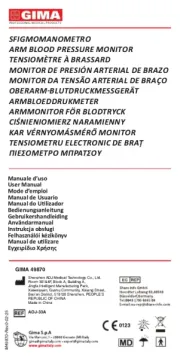
3 Mei 2025
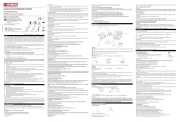
3 Mei 2025

25 Februari 2024

30 Augustus 2023

30 Augustus 2023

30 Augustus 2023
Handleiding Bloeddrukmeter
- Optimum
- Solac
- Levita
- Medel
- Crane
- Pyle
- Proficare
- Nokia
- Etekcity
- Orava
- Microlife
- Renpho
- Beurer
- Medicinalis
- Hama
Nieuwste handleidingen voor Bloeddrukmeter
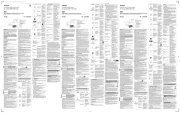
1 September 2025
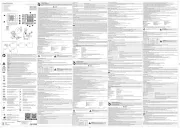
25 Augustus 2025
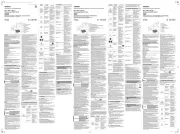
29 Juli 2025
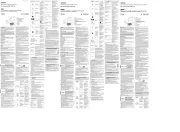
28 Juli 2025
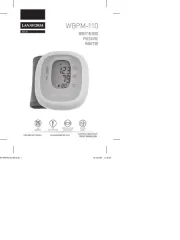
16 Juli 2025
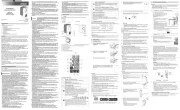
23 Mei 2025
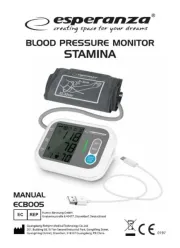
22 Mei 2025
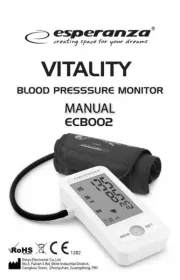
22 Mei 2025
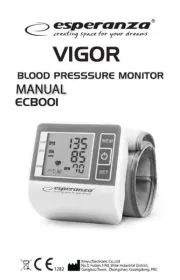
22 Mei 2025
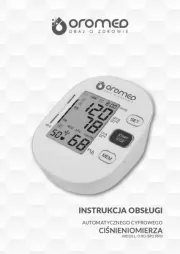
20 Mei 2025